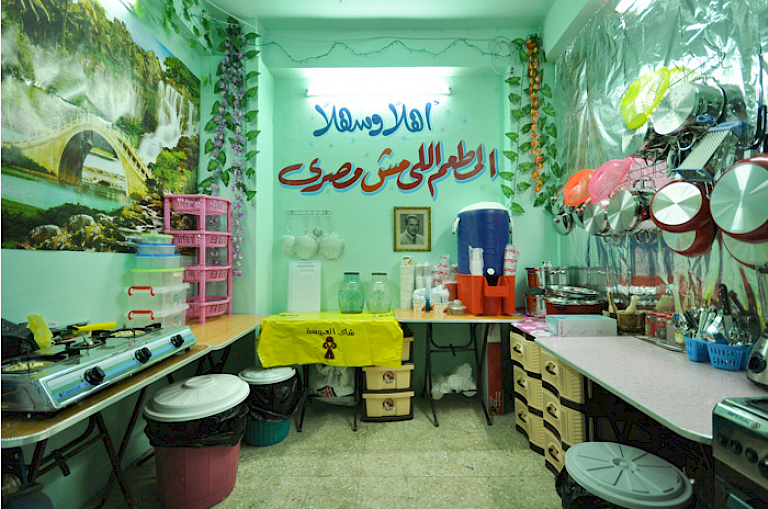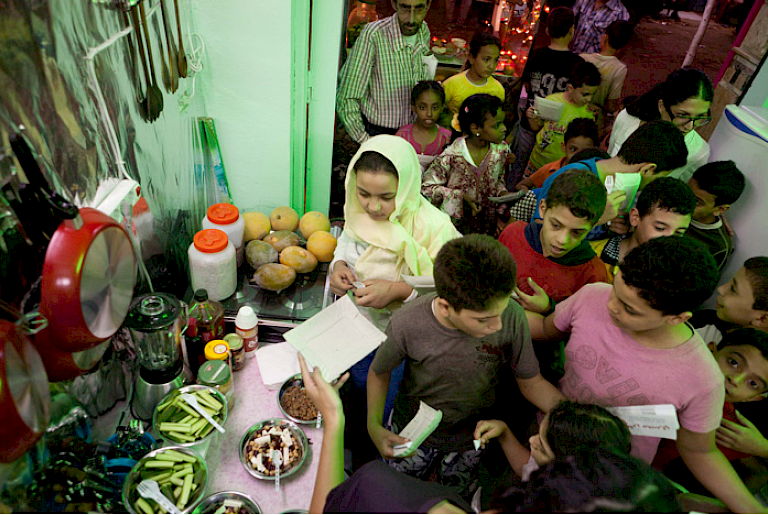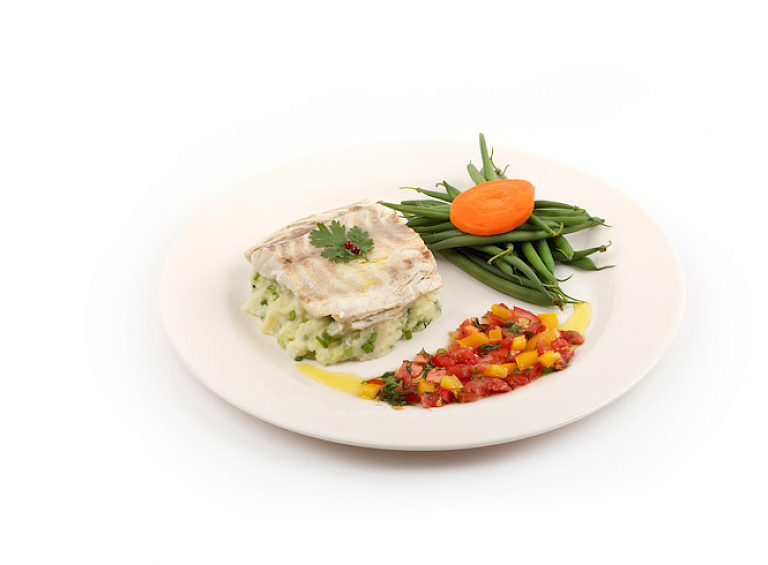



El Mattam El Mish Masry ('The restaurant that is not Egyptian') was a pop up restaurant situated in one of Cairo’s many unofficial settlements, named during a time when Egyptians were constantly questioning each other's dedication to a so called national cause. These unofficial settlements, or ‘slums’, have been growing exponentially as Cairo’s population has increased. This rapid increase, together with the country's economic crisis, and the lack of established sanitation practices, had led to these settlements being built with no planning permissions on agricultural lands, supplanting healthy food produce with residential rubbish and sewage. The artist also sought to highlight the fact that healthy produce has been made unavailable to 99% of the Egyptian population, as most of the premium locally produced food is immediately exported to Europe, leaving behind very little to work with.
The restaurant featured 4 categories of different meals served on a weekly basis based on the budgets of different classes of Egyptian society. The first week featured meals that a tiny portion of upper class Egyptians could access, and a Michelin star chef working in one of Cairo’s most luxurious hotels was commissioned to create them, using only the finest imported ingredients. As the weeks go by, the meals gradually become cheaper and cheaper to produce, recruiting different cooks familiar with preparing these meals. Finally, having to rely on 'local resources and produce', the menu started to reflect whatever was available from the local soil on the appropriated farmland. As the artist explores these no longer cultivated lands in search of vegetable produce for the meals, she finds nothing but cigarette butts, rubbish, contaminated soil and pollution. Playfully, these found items are prepared as meals in the kitchen and served to the masses. Gordos had invited many cooks in the community to help her make these meals, the restaurant itself was decorated to represent a typical popular eatery, and it helped raise some valuable awareness towards the area’s diminishing agricultural potential.
She was pleasantly surprised to find that her audience was not limited to any ‘artistic community’ as such, but rather appealed to the entire community living in that settlement. She also intended to provide an outlet where ‘real life’ topics about the political situation of Egypt during the Morsi presidency could be discussed more openly in a 'real' context - on the streets, over food. Whilst the Morsi government were focusing Egyptian life towards a new 'moralist' direction, the artwork served to represent the very basic day-to-day practical issues facing all Egyptians that were being glossed over. However, in terms of stimulating a form of change past people’s conversations though raising awareness, Gordos felt dissatisfied. The authorities began to issue threats that they would shut down the restaurant, and due to budgeting issues, the restaurant couldn’t grow into more pop ups around the city, where more conversations could sprout as she had intended. Nevertheless, this is a seminal work of art, due in no small part to it having been disguised as a social platform, and one that actively sought to enfranchise a very wide audience through its medium into its message. It was boldly located in the heart of the problem it addressed, and not confined to a museum space. It did not necessarily carry with it an artistic discourse that would have been challenging for the Egyptian citizen to comprehend. Its participation was overwhelming in numbers, and it was accurately demonstrative and straightforward, especially when the final meals were served.
All copyright belongs to Shanghai Academy of Fine Arts, Shanghai University.



